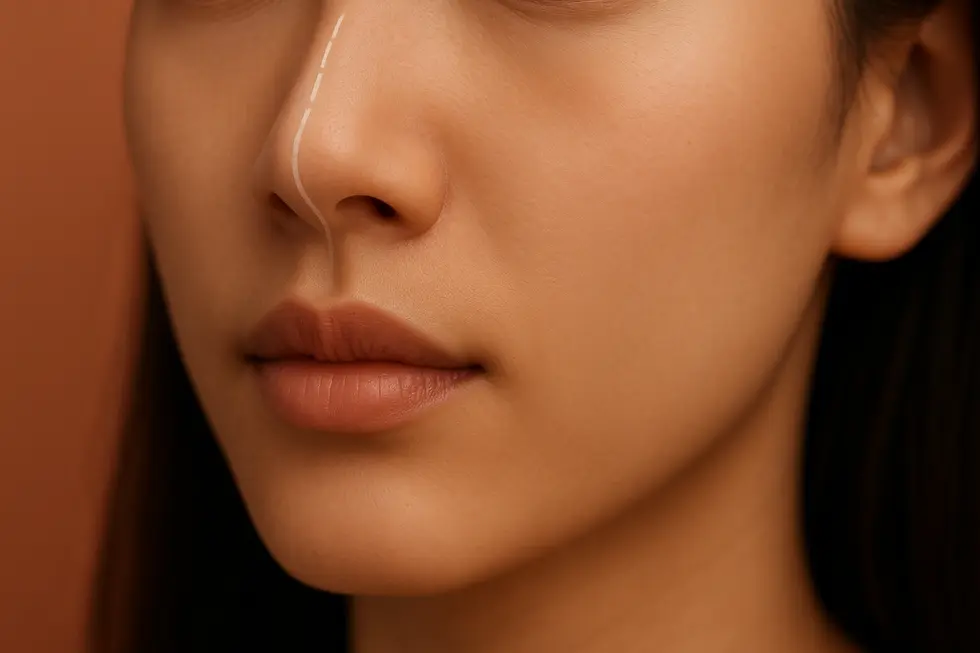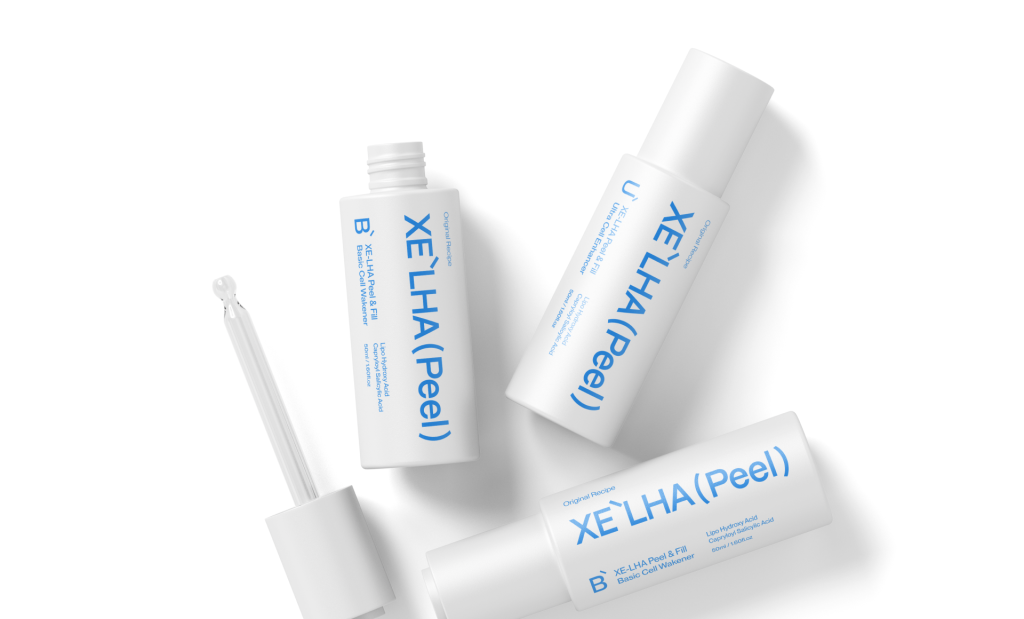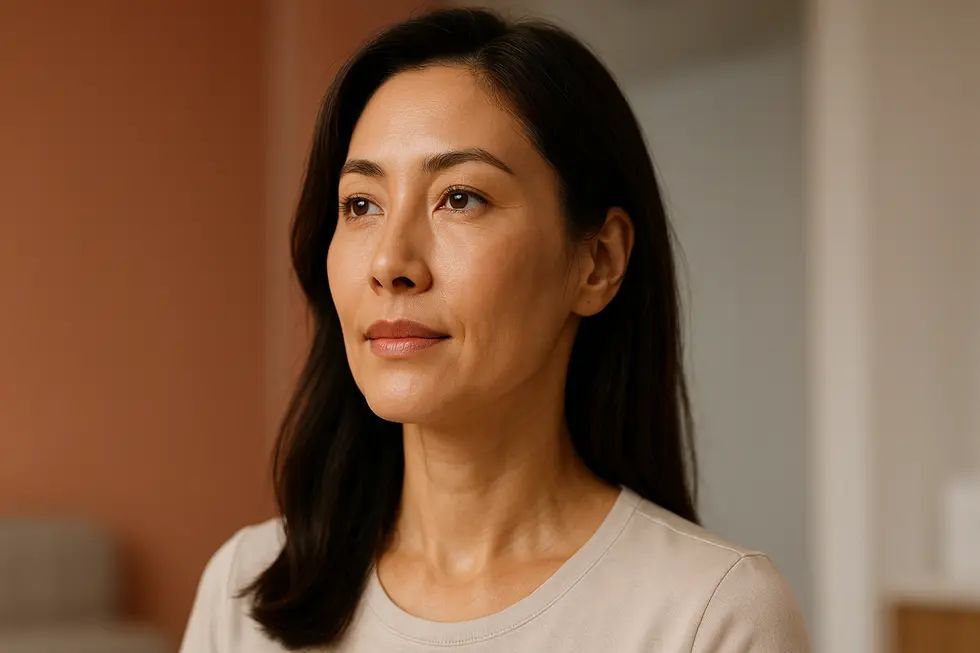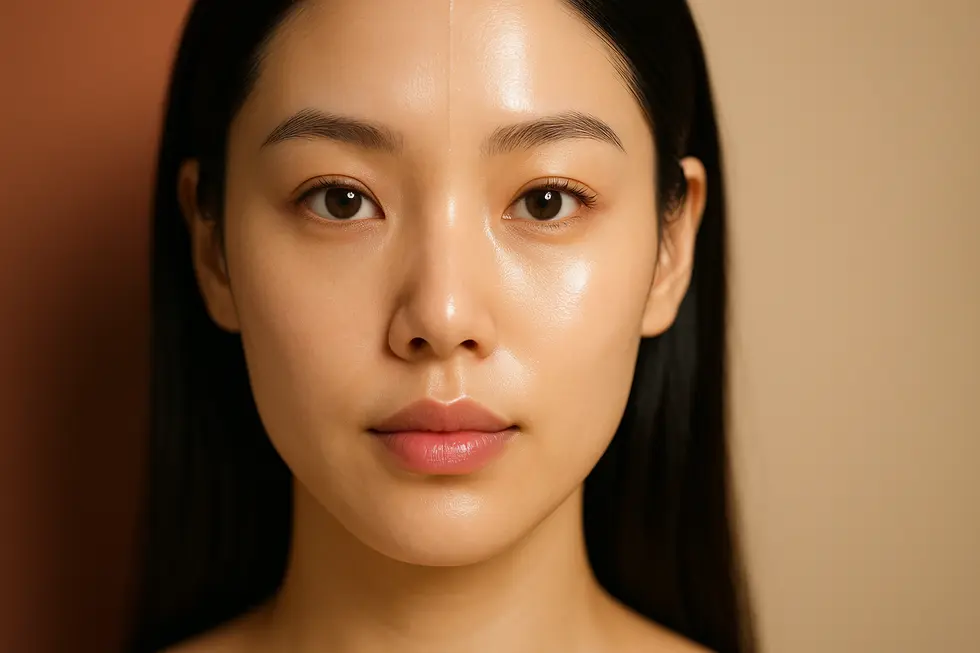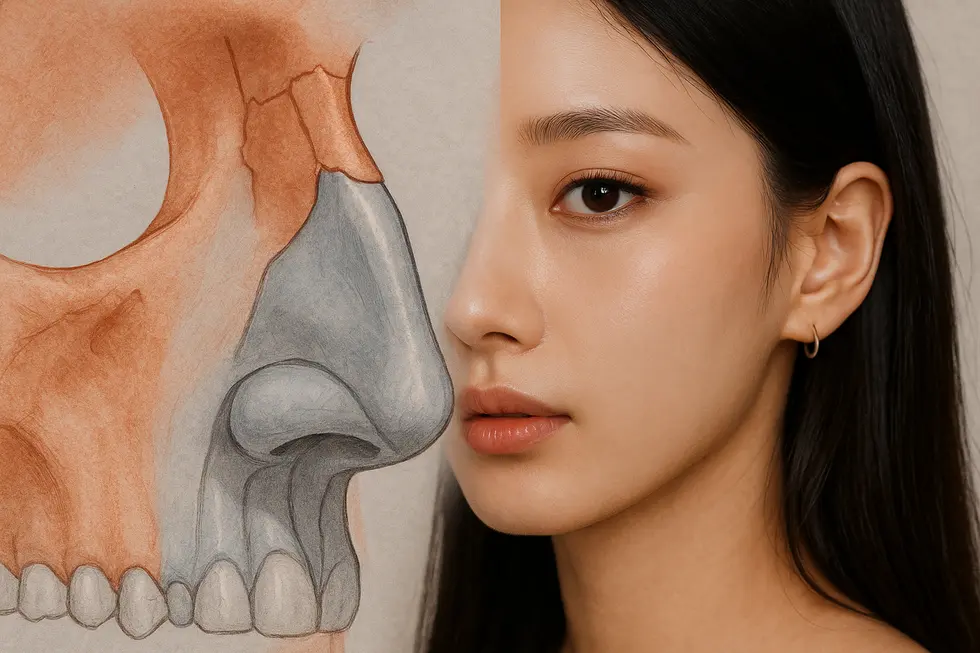
Have you ever looked in the mirror and felt like your nose just didn’t quite fit your face? Or maybe breathing through your nose feels like a constant struggle? You’re definitely not alone! Many people consider rhinoplasty, commonly known as a “nose job,” for both aesthetic and functional reasons. It’s a big decision, right? But understanding the process can make all the difference! 😊
Rhinoplasty is essentially a surgical procedure designed to reshape or reconstruct the nose. It’s amazing how changing just one feature can dramatically alter the balance of your entire face! Beyond looks, it can also be a life-changer for those with structural issues that make breathing difficult. We’ll explore exactly what that involves.
Contents
The Principles Behind Reshaping Your Nose 🤔
At its core, rhinoplasty is about carefully modifying the bone and cartilage that give your nose its shape. Think of your nose’s structure like a tent – the bones and cartilage are the poles and framework! A surgeon works with these elements to achieve the desired outcome. There are two main ways surgeons approach this:
- Open Rhinoplasty: This technique involves a small incision made across the columella (that little strip of tissue between your nostrils). This allows the surgeon to lift the skin and get a really clear view of everything inside. It’s often used for more complex cases or when making revisions.
- Closed Rhinoplasty: With this method, all incisions are hidden inside the nostrils, meaning no visible external scars! While it usually results in less swelling, it might offer slightly less access for very extensive reshaping compared to the open approach.
Depending on your goals, the surgeon might reduce a bump, refine the tip, narrow the nostrils, or even change the angle between your nose and upper lip. This can involve removing a little bone or cartilage, or sometimes, adding cartilage grafts (often borrowed from your septum, ear, or even a rib!) to build up certain areas.
A septoplasty is often combined with rhinoplasty if you have a deviated septum causing breathing issues. This addresses both form and function in one procedure!

Desired Outcomes and Effects 📊
So, what results can you realistically expect? Aesthetically, the main goal is a nose that looks natural and is in harmony with the rest of your face, enhancing overall balance and symmetry. This could mean a straighter bridge, a more refined or less bulbous tip, smaller or differently shaped nostrils, or adjusting the angle of your nose. Functionally, if breathing was an issue, correcting internal structures like a deviated septum can significantly improve airflow – a major benefit!
It’s important to remember that while the structural changes are permanent, your face will continue to age naturally over time. Also, patience is key! The final, refined shape of your nose won’t be fully visible for up to a year or even longer, as subtle residual swelling takes its time to completely disappear.
Understanding the Cost Structure 💰
Let’s talk about the elephant in the room: price. The cost of rhinoplasty can vary A LOT. Honestly, I can’t give you exact figures from a specific website, but I can tell you the main things that influence the price tag:
- Surgeon’s Expertise: Highly experienced and sought-after surgeons typically charge more.
- Location, Location, Location: Where you have the surgery makes a difference – costs vary by city and country.
- Procedure Complexity: A simple tip refinement will cost less than a major reconstruction or a revision surgery (doing a second rhinoplasty).
- Anesthesia Type: General anesthesia is usually pricier than local anesthesia with sedation.
- Facility Fees: You’ll have costs for the surgical suite and related services.
- Pre- and Post-Op Care: Consultations, medications, and follow-up appointments add to the total.
Always get a detailed quote that breaks down all these elements from your surgeon. And hey, if you’re getting the surgery partly for functional breathing problems, check with your health insurance – they might cover a portion of the cost!
Be wary of significantly low prices, as they might indicate less experienced surgeons or non-accredited facilities. Your safety and results are paramount!
Possible Side Effects and Precautions 🩺
Like any surgery, there are potential side effects and risks. Most common ones are temporary:
- Swelling (can last months subtly)
- Bruising around the eyes and nose
- Pain/discomfort (usually manageable with meds)
- Numbness
- Nasal congestion initially
Less common, but more serious risks include infection, excessive bleeding, poor healing, or an unsatisfactory outcome potentially needing another surgery. It’s super important to discuss ALL potential risks thoroughly with your surgeon.
Precautions? Definitely stop smoking well before and after surgery – it really impacts healing. Also, your surgeon will tell you which medications (like aspirin) to avoid beforehand to reduce bleeding risk. A thorough health review and realistic chat about your goals are essential first steps!

Are You a Good Candidate for Rhinoplasty? 🧐
Who is this procedure generally suitable for? Typically, good candidates are individuals who:
- Are unhappy with their nose’s size or shape.
- Have functional breathing issues due to nasal structure.
- Have finished their facial growth (usually by their mid to late teens).
- Are in good overall physical health.
- Have realistic expectations about what the surgery can achieve.
Your skin type also plays a role! Thicker, oilier skin might hide underlying structural changes more than thinner skin and could stay swollen longer. Thinner skin shows detail well but might also reveal minor irregularities more easily. Your surgeon will definitely assess this during your consultation.
The Recovery Journey: Post-Procedure Care 🛌
Recovery is a process, not a sprint! Here’s a general idea of what it involves:
- Immediately After: You’ll likely have a splint inside or outside your nose to support it, maybe even some packing. Rest with your head elevated, use cold compresses to help with swelling, and take your prescribed pain meds.
- First Few Weeks: Avoid strenuous activities, blowing your nose hard, and wearing glasses that press on the bridge (your surgeon will give specific instructions). Most noticeable bruising and swelling usually fade within 2-4 weeks.
- Longer Term: Remember how we said the final result takes time? It really does! It can take 6-12 months, or sometimes longer, for all the subtle swelling to go down and the final shape to settle. Protect your nose from bumps and strong sun! Regular follow-ups with your surgeon are key to ensure you’re healing well.
📝 Summary
So, we’ve covered a lot about rhinoplasty! From understanding the different techniques used to reshape the nose’s bone and cartilage, to discussing the aesthetic and functional improvements you can expect. We touched on the factors that make costs vary so much and highlighted the importance of considering potential side effects and being prepared for the recovery journey. Remember, finding the right, qualified surgeon is crucial! It’s a significant procedure, but for many, it leads to increased confidence and improved quality of life.
- Rhinoplasty reshapes the nose: Modifies bone and cartilage for aesthetic or functional reasons.
- Techniques vary: Open (external incision) vs. Closed (internal incisions).
- Outcomes take time: Final results can take up to a year to fully appear as swelling subsides.
- Costs are variable: Depends on surgeon, location, complexity, and facility fees.
- Recovery is gradual: Swelling and bruising subside over weeks, final shape emerges over months.
.single-summary-card-container { font-family: ‘Noto Sans’, sans-serif; display: flex; justify-content: center; align-items: center; padding: 20px 10px; background-color: #faf0e6; /* Light terracotta/beige background for container */ margin: 20px 0; } .single-summary-card { width: 100%; max-width: 700px; min-height: 250px; /* 최소 높이, 필요에 따라 조정 */ background-color: #ffffff; border-radius: 12px; box-shadow: 0 6px 18px rgba(0,0,0,0.12); padding: 25px; display: flex; flex-direction: column; overflow: hidden; border: 1px solid #d2b48c; } .single-summary-card .card-header { display: flex; align-items: center; border-bottom: 2px solid #a0522d; /* Terracotta border for header */ padding-bottom: 12px; margin-bottom: 12px; } .single-summary-card .card-header-icon { font-size: 34px; color: #a0522d; /* Terracotta icon */ margin-right: 14px; } .single-summary-card .card-header h3 { font-size: 26px; color: #a0522d; /* Terracotta header text */ margin: 0; line-height: 1.3; font-weight: 700; } .single-summary-card .card-content { flex-grow: 1; display: flex; flex-direction: column; justify-content: space-around; font-size: 17px; line-height: 1.65; color: #444; /* Main text color */ } .single-summary-card .card-content strong { color: #8b4513; /* Darker Terracotta/SaddleBrown for strong text */ font-weight: 600; } .single-summary-card .card-content .highlight { background-color: #fff9c4; /* Yellow highlight as per original theme */ padding: 2px 6px; border-radius: 3px; font-weight: bold; } .single-summary-card .card-content .formula { background-color: #fff3e0; /* Light orange/terracotta formula background */ padding: 6px 10px; border-radius: 4px; font-size: 0.9em; text-align: center; margin-top: 5px; color: #8b4513; /* Darker Terracotta for formula text */ } .single-summary-card .card-footer { font-size: 14px; color: #777; text-align: center; padding-top: 12px; border-top: 1px dashed #d2b48c; /* Light terracotta dashed border for footer */ margin-top: auto; } @media (max-width: 480px) { .single-summary-card { padding: 18px; min-height: auto; } .single-summary-card .card-header-icon { font-size: 30px; } .single-summary-card .card-header h3 { font-size: 22px; } .single-summary-card .card-content { font-size: 15px; line-height: 1.6; } .single-summary-card .card-content .formula { padding: 5px 8px; font-size: 0.9em; } .single-summary-card .card-footer { font-size: 13px; padding-top: 10px; } }
Rhinoplasty Snapshot
Frequently Asked Questions ❓
{“@context”: “https://schema.org”,”@type”: “FAQPage”,”mainEntity”: [{“@type”: “Question”,”name”: “Is rhinoplasty painful?”,”acceptedAnswer”: {“@type”: “Answer”,”text”: “👉 You will have discomfort and some pain, but it’s usually manageable with prescribed pain medication. Significant pain is uncommon.”}},{“@type”: “Question”,”name”: “How long does recovery take?”,”acceptedAnswer”: {“@type”: “Answer”,”text”: “👉 Initial recovery (bruising, major swelling) takes 2-4 weeks. However, subtle swelling can last many months, with the final result visible around one year or longer.”}},{“@type”: “Question”,”name”: “Will my breathing improve after rhinoplasty?”,”acceptedAnswer”: {“@type”: “Answer”,”text”: “👉 If your rhinoplasty includes correcting structural issues like a deviated septum (septoplasty), breathing can significantly improve. This is a common functional goal of the procedure.”}},{“@type”: “Question”,”name”: “How much does rhinoplasty cost?”,”acceptedAnswer”: {“@type”: “Answer”,”text”: “👉 Costs vary widely based on the surgeon’s fee, location, complexity of the surgery, anesthesia, and facility costs. It’s essential to get a detailed quote from your surgeon. Functional portions may be covered by insurance.”}},{“@type”: “Question”,”name”: “Are the results permanent?”,”acceptedAnswer”: {“@type”: “Answer”,”text”: “👉 The structural changes made during rhinoplasty are permanent. However, your nose will continue to change naturally with the rest of your face as you age.”}}]}
Taking the step to consider rhinoplasty is a personal journey, and hopefully, this guide has helped shed some light on what it entails. Remember, the best way to get information tailored to *you* is by having a consultation with a qualified, board-certified plastic or facial plastic surgeon. They can assess your specific needs and goals and walk you through every detail. Don’t hesitate to ask all your questions! If you have any general questions about this guide, feel free to ask in the comments! 😊

